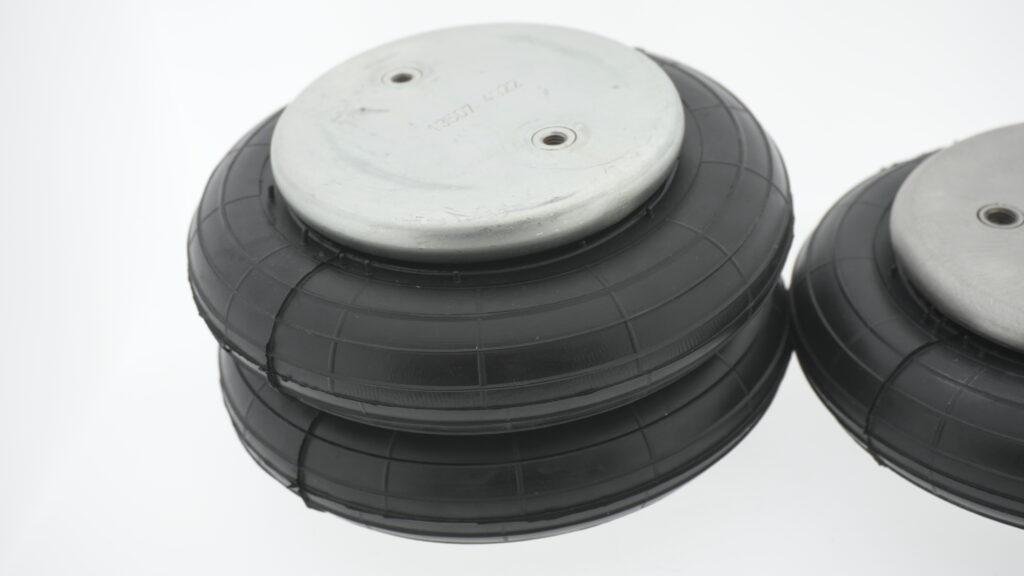
Understanding Compliance Requirements
Ensuring air bellows meet workplace safety regulations requires a comprehensive approach. Organizations must adhere to national and international safety standards to guarantee operational security. ISO 9001 and ISO 45001 outline quality management and occupational health guidelines, ensuring manufacturing consistency and workplace safety, respectively. Regulations such as OSHA (Occupational Safety and Health Administration) set forth legal requirements for safe workplace operations.
Proper documentation, including material certificates, pressure test reports, and quality control logs, ensures compliance with legal standards. Companies must verify that the air bellows they use align with established protocols, reducing the risk of workplace accidents due to material fatigue, overpressure, or improper installation.

Selecting the Right Materials for Safety
The material composition of air bellows directly impacts workplace safety. Tevema produces air bellows with high-quality elastomers reinforced with durable fabric plies and metal end closures. These components enhance durability, chemical resistance, and temperature stability.
Common elastomer compounds include:
- Natural Rubber (NR/SBR) – Ideal for general industrial applications, offering excellent flexibility and shock absorption.
- Nitrile Rubber (NBR) – Provides resistance to oils, fuels, and ozone exposure.
- Chlorobutyl (CIIR) – Ensures acid resistance and high-temperature stability.
- Ethylene Propylene Diene (EPDM) – Recommended for high-temperature environments and outdoor applications.
Choosing the correct material ensures compliance with workplace safety standards and extends operational longevity.
Conducting Pressure Testing for Safety Assurance
To guarantee workplace safety, all air bellows must undergo rigorous pressure testing before installation. Standard tests include:
- Burst Pressure Testing – Determines the maximum pressure capacity before failure.
- Leakage Testing – Ensures airtight integrity under operating conditions.
- Fatigue Testing – Evaluates long-term durability under cyclic loading.
Test results confirm compliance with industry regulations and prevent workplace hazards caused by unexpected failures.
Proper Installation to Enhance Workplace Safety
Incorrect installation increases the risk of failure, leading to potential hazards. Following manufacturer guidelines is essential for ensuring safe operation. Best practices include:
- Aligning Mounting Plates Correctly – Prevents stress concentration that could lead to early wear.
- Checking Fastener Torque – Ensures secure attachment without over-tightening, which could damage air bellows.
- Verifying Air Supply Regulation – Prevents over-pressurization and operational malfunctions.
- Avoiding External Contaminants – Protects against abrasion, chemical exposure, and UV degradation.
Following these guidelines reduces workplace risks and enhances longevity.
Environmental Considerations for Workplace Safety
Air bellows must withstand various environmental factors to maintain workplace safety. Factors such as temperature fluctuations, chemical exposure, and moisture can impact performance. Tevema offers stainless steel end closures and special elastomers for demanding applications, providing resistance against corrosion and chemical wear.
Storage conditions also play a crucial role. Air bellows should be kept in a cool, dry place, away from direct sunlight and ozone-producing equipment, ensuring long-term safety compliance.
Routine Maintenance for Workplace Safety Compliance
Regular inspection and maintenance are essential for workplace safety. Routine checks should include:
- Visual Inspection – Identifies cracks, abrasions, and misalignments.
- Leakage Detection – Verifies air-tight integrity under operating conditions.
- Pressure Monitoring – Ensures regulated pressure levels to prevent overloading.
Implementing a preventative maintenance program minimizes unexpected failures and enhances workplace safety.
Training and Workplace Safety Awareness
Workplace safety training is critical to ensuring proper handling and maintenance of air bellows. Training programs should focus on:
- Installation Best Practices – Teaching personnel how to correctly mount and align air bellows.
- Safety Compliance Procedures – Ensuring familiarity with ISO, OSHA, and industry-specific regulations.
- Emergency Response Training – Preparing workers for unexpected failures and rapid response actions.
Investing in training programs improves workplace safety, reducing accidents caused by misuse or lack of knowledge.
Ensuring air bellows meet workplace safety regulations involves selecting high-quality materials, performing pressure testing, following proper installation procedures, maintaining environmental resilience, and implementing routine maintenance. By prioritizing workplace safety through training and compliance, organizations can minimize risks, extend product lifespan, and maintain efficient operations.
Focus Keyphrase:
